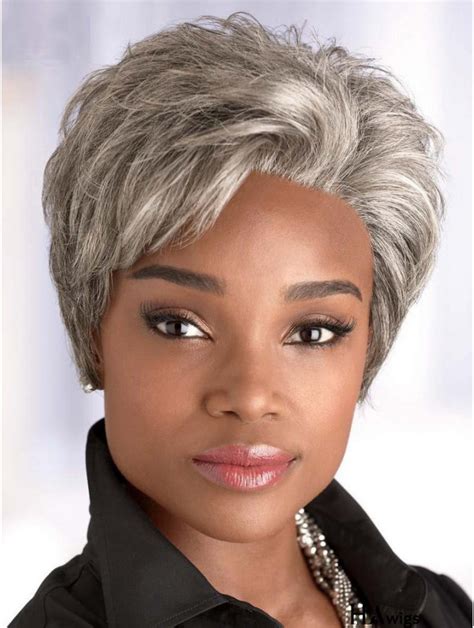Growing old gracefully is a beautiful thing. However, it can come with some challenges, including hair loss and hair thinning. This can be a frustrating and confidence-shaking experience for any woman, but especially for elderly women.

That’s where wigs come in. Wigs can help elderly women restore their confidence, feel more beautiful, and reclaim their sense of style.
5 Types of Wigs for Elderly Women
There are many different types of wigs available on the market, so it’s important to find one that’s right for you. Here are 5 of the most popular types of wigs for elderly women:
- Synthetic wigs: These wigs are made from artificial fibers, such as nylon or polyester. They are affordable, easy to care for, and come in a wide variety of styles and colors.
- Human hair wigs: These wigs are made from real human hair, which gives them a more natural look and feel. They are more expensive than synthetic wigs, but they can last longer and can be styled in more ways.
- Lace front wigs: These wigs have a sheer lace front that creates the illusion of a natural hairline. They are a good choice for women who want a wig that looks realistic.
- Monofilament wigs: These wigs have a thin, mesh cap that provides a comfortable and natural fit. They are a good choice for women with sensitive skin or scalp conditions.
- Custom wigs: These wigs are made to order to fit your exact head shape and size. They are the most expensive type of wig, but they offer the most natural look and feel.
3 Factors to Consider When Choosing a Wig
When choosing a wig, there are three main factors to consider:
- Face shape: The shape of your face will determine the type of wig that will look best on you. If you have an oval face, you can wear any type of wig. If you have a round face, you should choose a wig with a longer length and side-swept bangs. If you have a square face, you should choose a wig with a shorter length and soft, rounded layers.
- Hair texture: The texture of your hair will also help you choose the right wig. If you have fine hair, you should choose a wig with a similar texture. If you have thick hair, you can wear a wig with a thicker texture.
- Lifestyle: Your lifestyle will also play a role in choosing a wig. If you are active, you should choose a wig that is easy to care for and style. If you are more sedentary, you can choose a wig with a more elaborate style.
6 Ways to Care for Your Wig
Once you have chosen a wig, it’s important to care for it properly to extend its lifespan. Here are 6 ways to care for your wig:
- Wash your wig regularly. The frequency with which you need to wash your wig will depend on how often you wear it and how much you sweat. In general, you should wash your wig every 2-4 weeks.
- Use a mild shampoo and conditioner. When washing your wig, use a mild shampoo and conditioner that is designed for synthetic or human hair wigs. Avoid using harsh chemicals or hot water, as these can damage the wig.
- Air dry your wig. After washing your wig, let it air dry on a wig stand. Do not blow dry your wig, as this can damage the fibers.
- Brush your wig regularly. Brush your wig gently with a wide-tooth comb to remove tangles and keep it looking its best.
- Store your wig properly. When you’re not wearing your wig, store it in a cool, dry place. Avoid storing your wig in a plastic bag, as this can trap moisture and cause the wig to mildew.
- Get your wig professionally styled. If you want to change the style of your wig, it’s best to take it to a professional hairstylist. A hairstylist can help you choose a style that suits you and can cut and style your wig to perfection.
3 Tips for Wearing a Wig with Confidence
Wearing a wig can take some getting used to. Here are 3 tips for wearing a wig with confidence:
- Choose a wig that fits you well. A wig that fits well will look more natural and feel more comfortable. If your wig is too loose, it could slip off your head. If your wig is too tight, it could cause pain or discomfort.
- Secure your wig with wig tape or glue. If you’re worried about your wig falling off, you can secure it with wig tape or glue. Wig tape is a double-sided tape that you can apply to the inside of your wig cap. Wig glue is a strong adhesive that you can apply to the inside of your wig cap or to your scalp.
- Be yourself. The most important thing is to be yourself when wearing a wig. Don’t try to be someone you’re not. Wear your wig with confidence and let it enhance your own natural beauty.
Conclusion
Wigs can be a great way for elderly women to restore their confidence, feel more beautiful, and reclaim their sense of style. However, with so many different types of wigs available on the market, it’s important to do your research and choose a wig that’s right for you.
By following the tips in this guide, you can find a wig that will help you look and feel your best.
